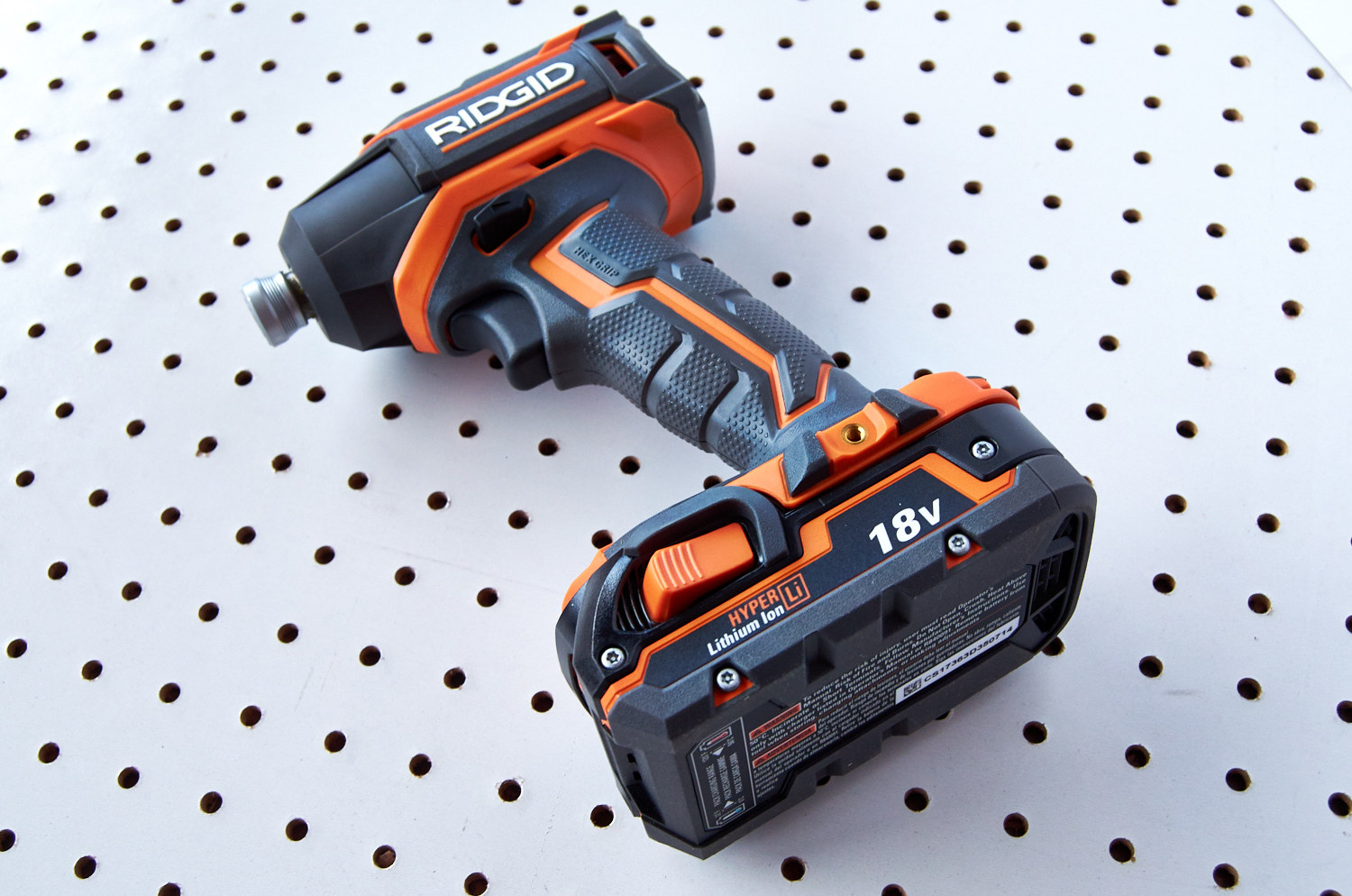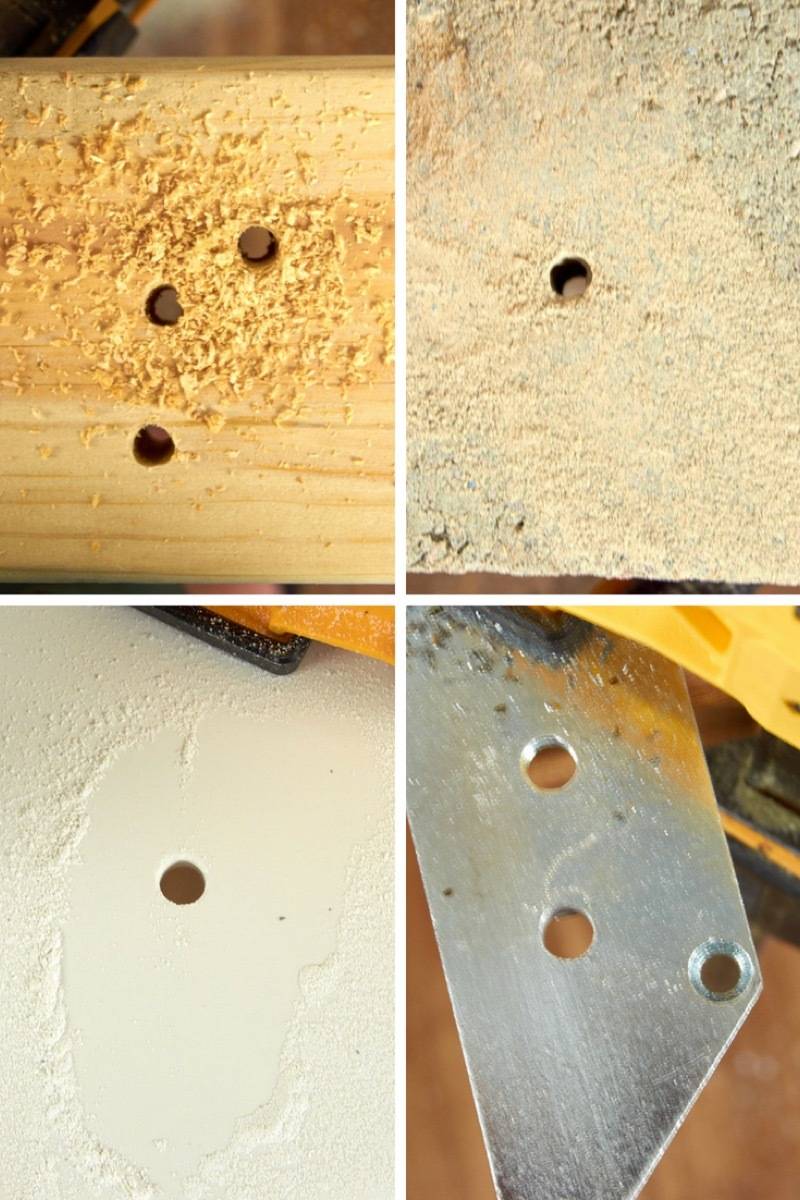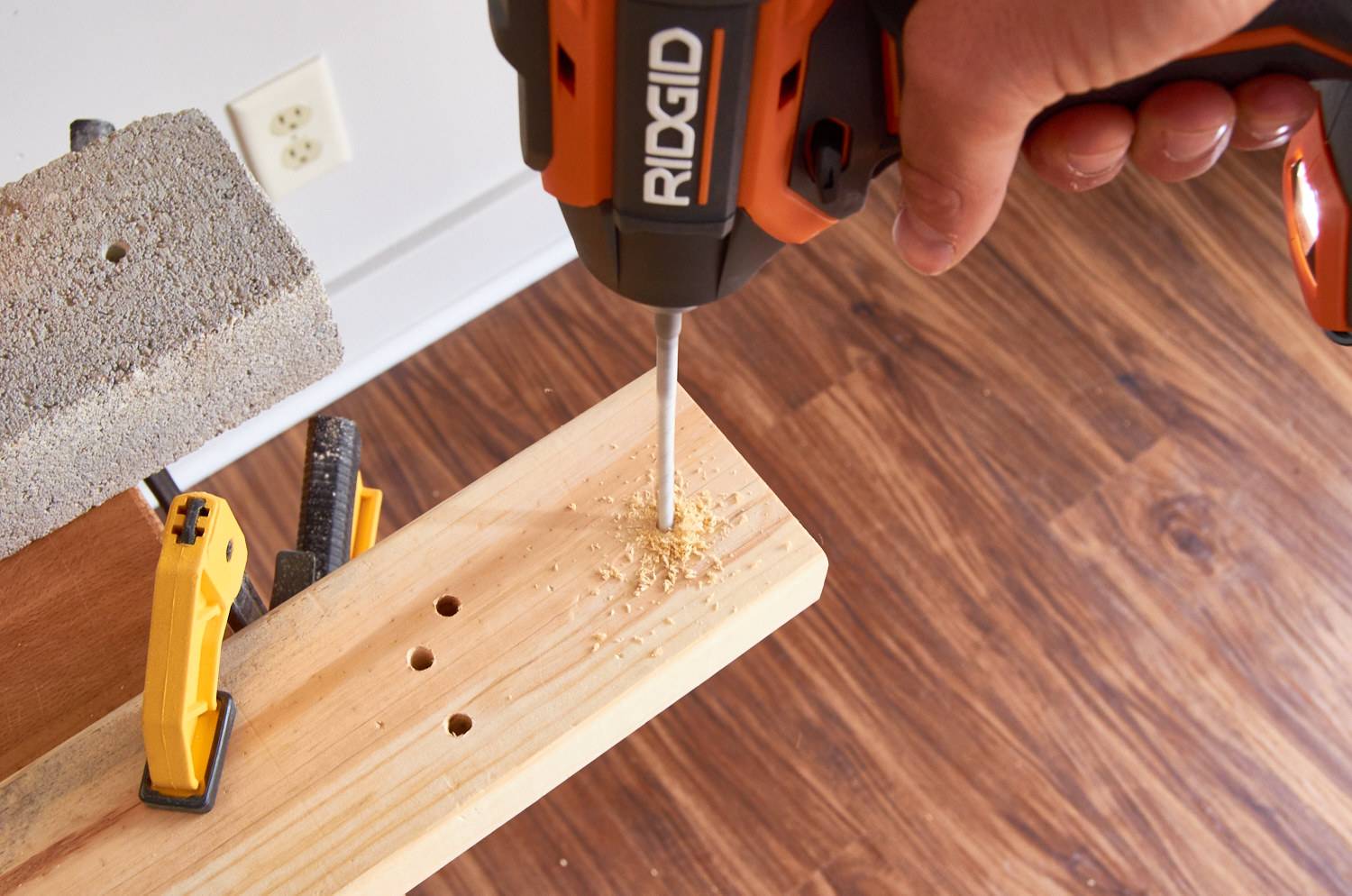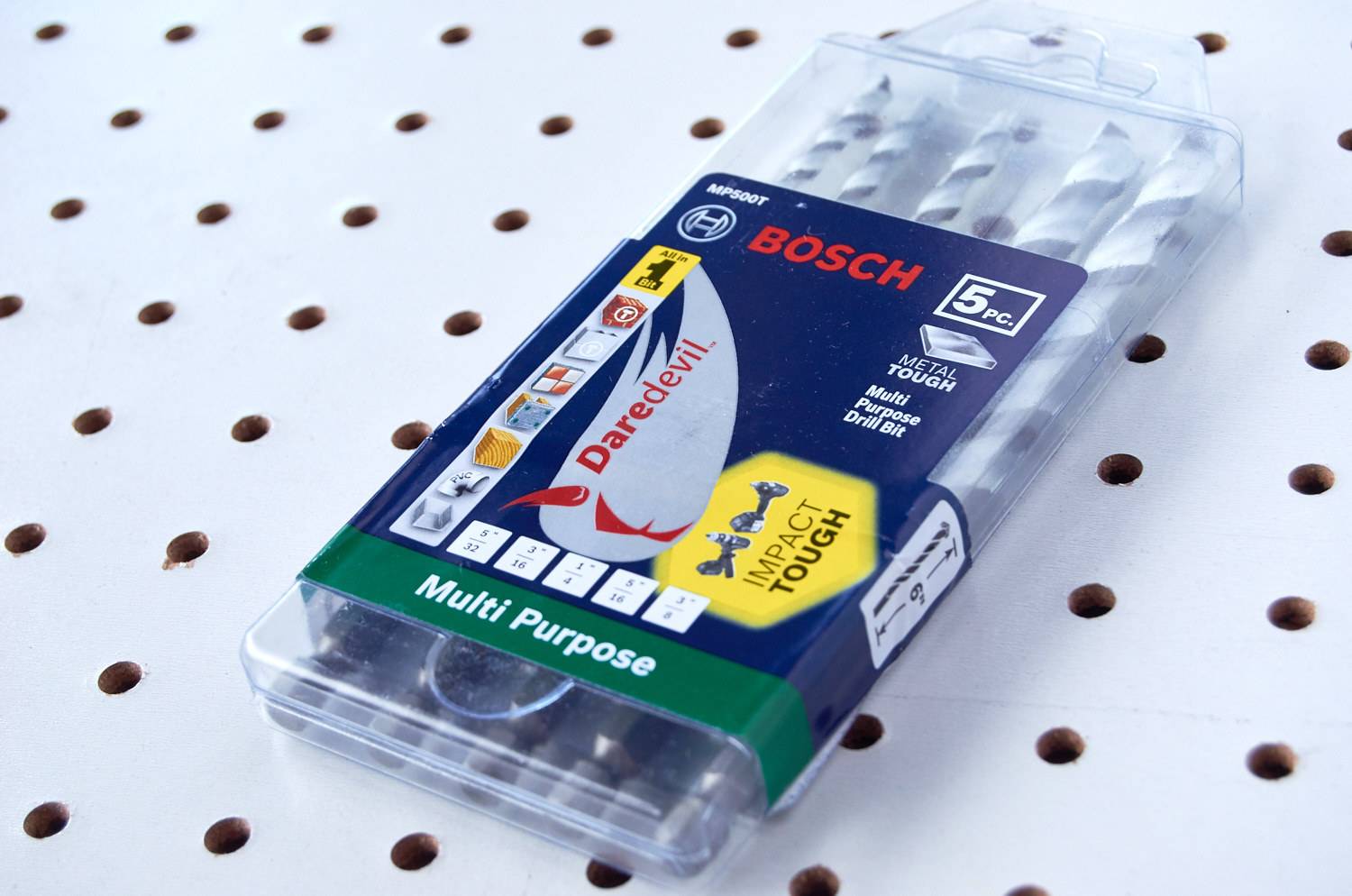
Today we’re checking out the RIDGID 18-Volt Impact Driver, which you can buy alongside a cordless drill in a combo kit for $179 at The Home Depot. I’ve built up a lot of trust for the Ridgid brand over the years. In fact, my very first (ever) impact driver was a Ridgid (the great-grandaddy of this model). But beyond that, I’ve owned several of their products, including a circular saw (indestructible) and a wet/dry vacuum (unbelievably versatile).
So I was excited to get this combo kit in the mail last week, because I feel a guy can’t ever have too many impact drivers. Sure, having the drill is nice too, but to be honest, I only reach for a normal drill in rare occasions. The impact driver is just so much more versatile and useful, not to mention light and maneuverable.
Along with the tool, The Home Depot sent us a multi-purpose drill bit set from Bosch. These tungsten carbide-plated bits have a hex shank (big plus) for compatibility with quick change chucks (like, every impact driver on the market), and they’re meant to go through almost any material (namely: tile, masonry, wood, metal, and concrete). I have an absolute jungle of drill bits in my tool bags right now, primarily because I never know what type of material I’ll be drilling into. So if these work as advertised, I’ll be excited to toss out a bunch of redundant bits.
So, What Is An Impact Driver, Anyway?
A normal drill uses a motor to turn the shank with a constant torque (you can change the speed, but for each speed you’re at, you get an even output of torque). Then the shank turns the screw, or drill bit, rotating it into the material.
An impact driver is different: it has an internal mechanism which uses a spring to store up and release energy in a burst, twice for each rotation. This generates much more torque.
Why is torque so great? Well, with a normal drill, you need to push down onto the tool to get it to continue moving through the material. With an impact driver, the torque bursts do all the work for you, so you just need to hold the drill in place. With a power drill, you always have to worry about the bit getting caught in dense material, which causes the tool to kick back (potentially injuring your arm!). Impact drivers don’t kick back that way.
The RIDGID 18-volt Impact Driver: Brushless Technology at an Entry-Level Price
Let’s start with the driver. This combo kit comes in a neatly packed, rugged contractor bag. The kit includes two batteries and a charger, so, it’s pretty much everything you need to get going. As with all power tools, your choice of battery platform is going to influence what you buy, but as I said before, I’ve had great experiences with the Ridgid brand, so I’d feel very comfortable locking into that platform.
The impact driver has three speed settings, which is a feature I haven’t see on impact drivers before. That said, most of what I end up using this tool for is heavy duty work, so I’d be surprised if I often use more than one speed.
Some other features:
- Both tools have all metal gears and brushless motors (read: more durable, better battery life)
- The impact driver produces 2,250 in. lbs. of torque (that’s about the most of any battery-powered tool out there)
- RIDGID offers a lifetime service agreement (with free replacement batteries, apparently!)

So how’d it do?
No complaints here, friends. The RIDGID impact driver, paired with Bosch’s Daredevil bits, blasted through all the materials I tried it on. No difficulty, whatsoever, even when drilling through 4mm of stainless steel. As expected, I received no kickback from the tool, and was able to operate the drill one-handed on all the materials except metal (there, I needed two hands just to keep the bit from wandering).


Do I need an impact driver? I already have a drill!
Yes. You do. Sorry. That’s the only correct answer. A drill is super useful and great for a lot of tasks, but just can’t match the power and torque of an impact driver. Without an impact driver, you’ll never be able to free rusted bolts, bore through thick hardwoods, or fix bolts into masonry. And that would just be sad, right?

What else should I know?
Hmm… let’s see. An impact driver is not a precision tool. It’s hard to control the rotation at low speeds, and therefore easier to strip screws and bolts with it. Don’t use one for fixing your mother-in-law’s reading glasses (or, if you do, take a video and let me know ’cause that would be some intense #impactdriverskills).
Eye protection is, believe it or not, important when using one of these. You never know when a piece of material will catch and come flying out toward your face. Likewise, while you can operate an impact driver with one hand, you should try not to. Having a second hand on the tool makes it less likely that it’ll slip free and land on your foot. Or your mother-in-law’s foot.
This post is part of our new tool school series!
This post is sponsored by The Home Depot. All opinions are mine alone. Thanks for reading, and for supporting the brands that make Curbly possible.
I acknowledge that The Home Depot is partnering with me to participate in the ProSpective 2018 Campaign. As a part of the Program, I am receiving compensation in the form of products and services, for the purpose of promoting The Home Depot. All expressed opinions and experiences are my own words. My post complies with the Word Of Mouth Marketing Association (WOMMA) Ethics Code and applicable Federal Trade Commission guidelines.
Other Tool Posts You May Love
- Power Tools 101: How to Use a Circular Saw, and Why You Definitely Need One in Your Tool Kit
- Tool School: Why an Impact Driver is So Freakin’ Awesome
- Tool School: The RIGID NXT Wet/Dry Vac
- Tool School: Framing Nailer
- Tool School: Essential Hand Saws for Every Tool Box
- Tool School: The Drywall Screw Gun

So, when DO you reach for a normal drill?
@suzy great question! I’d reach for a normal drill if I was drilling a pilot hole, assembling a piece of furniture (where I had to tighten a bunch of screws, but didn’t want to risk stripping/over-tightening them with an impact driver), or when I’m driving a short/small screw. A normal drill is also great for other rotary tasks, like polishing or buffing using a specialty attachment.